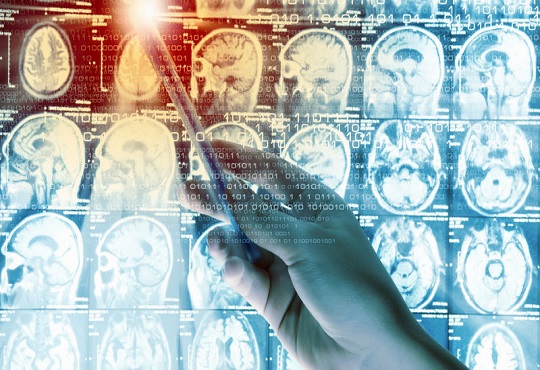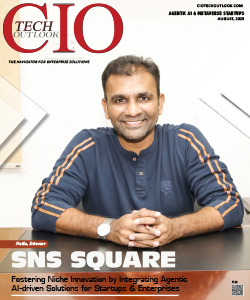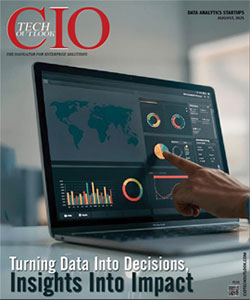Top 5 Trends in the Diagnostic Imaging Industry
Janifha Evangeline | Wednesday, 01 June 2022, 15:53 IST

The process of diagnosis leverages data collection & complex analysis for determining the health of patients and course of treatment. The most critical aspect of healthcare is accurate diagnosis. What serves as a precursor for deciding a patient’s journey towards therapeutics/surgery is Diagnostic imaging. The increasing prevalence of chronic diseases worldwide has resulted in a subsequent rise in the number of diagnostic imaging procedures being carried out each year. This in turn has called for more advanced imaging technologies & software to facilitate precise diagnosis.
Lowered doses of Ionizing radiation
The development of diagnostic imaging systems along with lowered doses of ionizing radiation is a significant technological advancement. This is because it results in reduction of harmful effects of radiation both on technicians as well as patients. The major players in medical imaging technology are continuously striving for gaining a competitive edge and they are trying to achieve this by reducing the radiation dose in imaging systems. Moreover, the shift from analog to digital systems rendering more faster, hassle-free & accurate imaging X-ray imaging, C-arms & fluoroscopic imaging is further bolstering market growth.
Hybrid Imaging technology
Hybrid imaging has been one of the most sought-after advancements in imaging technology. However, the most significant development has been PET/CT - the innovation of hybrid imaging systems. This hybrid modality has been highly successful and therefore, the major imaging system manufacturers manufacturing imaging systems no longer offer standalone PET systems. Owing to the success of hybrid PET/CT systems, SPECT/CT systems & hybrid PET/MRI and have also become popular and these systems can offer precise images with higher/better resolution when compared to standalone systems. These systems can render morphological & physiological information in just a single examination.
For instance, a SPECT/CT system renders accurate localization with improving the specificity of information provided by CT, in the case of skeletal evaluation. Due to the aforementioned advantages, most of the standalone systems are being replaced with hybrid systems by hospitals. Also, the nuclear imaging and markets are likely to show promising growth opportunities owing to advanced technologies and the rise in prevalence of oncology.
Cryogen-Free Preclinical MRI Scanners
A vital step to overcoming the challenges associated with the depleting helium gas supplies around the world is due to the development of cryogen-free preclinical MRI Scanners. Since high speed of acquisition will expand the application areas of MRI to cardiac imaging and time-resolved contrast-enhanced angiography, the speed of image acquisition stays a key target area for MRI technology developers. Such technological innovations as well as advancements which are mainly focusing on improving the functionality of MRI systems as well as expanding their application areas are expected to bolster the demand for MRI systems end-users in the near future.
Contrast Agents in diagnostic imaging
What has resulted to a huge surge in the demand for diagnostic imaging procedures is the rise in the number of patients with chronic diseases that include cardiovascular diseases, and cancer. This, in turn, has led to a surge in demand for contrast media/agents. Furthermore, governments across the globe are giving approvals for the use of a large number contrast agents in diagnostic imaging procedures.
“Today’s medicine has sort of reached its diagnostic best when cancerous tumors that are barely forming as a group of a few hundred cells can not only be visualized but can be assessed for their nature (benign versus malignant),” says Kumara Sanjaya, Lead Clinical specialist and Product Manager at Philips HealthTech.
“It is not wrong to say that almost everything that has advanced in healthcare has followed this revolution that occurred since the 1960s in the field of diagnostic imaging, with CT and Ultrasound coming out as the herd leaders in technological terms,” he adds.
Advancements in MRI techniques, that include the development of superconducting magnets, high-field MRI, software applications and open architecture are driving interest among hospitals, academic institutes, physicians, research laboratories, etc. furthermore, the introduction of MRI-compatible pacemakers will increase the number of patients eligible for MRI procedures, to a greater extent.
Automated CT Scanners
Over the last 10 years, the diagnostic market has witnessed a great technological advancement in the field of computed tomography, including the emergence of low-dose and automated CT scanners. These devices render high image quality with improved spatial resolution and low radiation exposure to the patients and surgeons. These advanced CT devices have a simplified console and provide affordable installation with minimum space requirements and ease of operability. Therefore, these factors are bolstering the adoption of such products among healthcare professionals as well as researchers across major healthcare markets globally.
The road ahead
At present, diagnostic imaging has come a long way and the industry is anticipating to witness continued improvements in the ways healthcare institutes examine and treat patients. As diagnostic imaging trends point to ever-improving techniques and tools, it will be easier for them to make the right diagnosis more efficiently.




